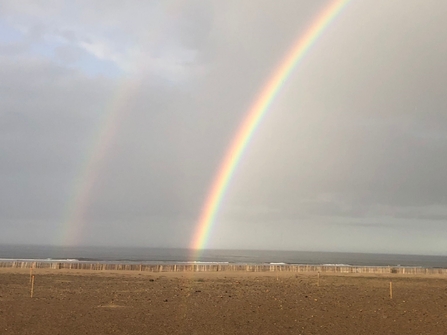Welcome to the second Durham Wildlife Trust little tern blog of 2023. It’s a little later than intended but the delay is entirely due to positive reasons and events, not least the fantastic progress we and our little tern visitors have made since the first arrivals from Africa in May. The Seaton Carew little tern site is one of a number of SeaScapes projects in 2023, spanning the Tyne to Tees coastline. It has been funded by National Lottery Heritage Fund and planned/coordinated by Seascapes, Durham Wildlife Trust and Hartlepool District Council.
In this blog I will share the key achievements and activity to-date and will include some of the amazing photographs captured by visitors to the site and of course by our team of volunteers and wardens. Our team has grown significantly since the last blog and I’d like to welcome and show appreciation to Amy, Kelsey, Jade, Nicole, Rachel, Shirley and Aaron. The successes I’m about to describe could not have been achieved without the commitment of time and energy given freely by them together with our core team of Tony, Mike, Sheila and Keith and also by Durham Wildlife Trust wardens Alex, Dobrawa, Shona, Dave and Chris.
If, after reading this, you would like to know more or even visit the site we will be delighted to see you there. You’ll find us on the promenade, conveniently adjacent to the Seaton Beach car and coach park – TS25 1DD in your sat nav.









